Indian food, Lifestyle
5 Indian food myths busted!
There are so many misconceptions out there about Indian food. Many of these stem from the belief that “all Indian food is the same”. So, I’m here to set the record straight! Even if you consider yourself a ‘curry afficionado’, I bet you will have been tricked by at least one of these…
1. Myth – Indian food is fattening, greasy and a food to turn to when you feel like over-indulging
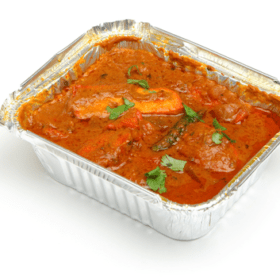
TRUTH – Traditional Indian food is your best friend when it comes to eating a healthy diet…
We’ve all seen it… that layer of orange oil that sits on top of the Indian takeaway dish. The one that you try and carefully spoon off to reduce your fat intake (and guilt). However, as the daughter of a REPS level 3 qualified personal trainer, I can tell you that this is ABSOLUTELY NOT TRUE of traditional Indian food!
Takeaway food is unhealthy, and that can be takeaway food of any kind, whether it’s Indian, Chinese, Italian, Spanish…the list could go on and on. However, traditional, authentic, home-cooked Indian food is not only delicious, but incredibly good for you.
Dishes such as dhal and roti (lentils and wholemeal flatbreads) are a staple of the Punjabi (North Indian) diet, plus that particular combination is nutritionally sound. A meal of dhal and roti contains a full set of amino acids. Amino acids are the proteins present in food that our bodies use to make new cells. There are many different types of amino acids, and when you eat lentils and wholemeal flatbreads together, they contain a complete set of amino acids.
Delicious food that your body will love…what more could you want!
2. Myth – All Indian food is really hot
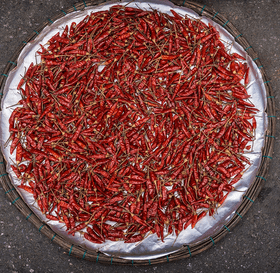
TRUTH – The heat of a dish depends on the region from which it comes
As a general rule of thumb, the further North you go in India, the milder the dish, and the further South you go, the hotter the dish.
Northern India uses more of the fragrant spices, such as cumin seeds and green cardamom, as well as green chillies which provide more of a fresh heat. Southern Indian dishes tend to use spices with a flavour that is underpinned by heat, such as peppercorn and mustard seeds, they also tend to use red chillies which give a dry heat to dishes.
3. Myth – The dish ‘saag’ is made from spinach
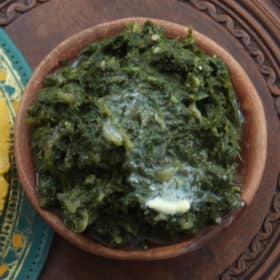
TRUTH – ‘Saag’ is not spinach
The ingredient ‘saag’ (pronounced ‘sarg’) is actually mustard leaves, not spinach. During the 60’s and 70’s, there was an influx of Indians entering England (my grandparents arrived a little earlier in the 50’s). When they tried to get hold of mustard leaves, they found that is was not an ingredient that was available in England during that time. So, they had to adapt and look for the closest alternative, which was spinach (which I hate to say, was most readily available as tinned spinach at that time!). Hence the misconception that ‘saag’ is made from spinach.
4. Myth – You need to keep a vast range of spices to be able to cook Indian food
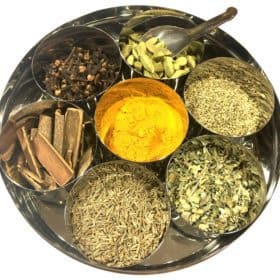
TRUTH – You only need a few select spices to cook Indian food at home.
When you watch cookery programmes and see the presenter using, what seems like, over 10 different spices or spice blends, you say to yourself ‘why bother when I need to buy so many different ingredients’, and I completely agree with you. You shouldn’t have to buy numerous ingredients that you will only use every once in a while.
Don’t forget that India is a vast country, and each state/region has it’s own culinary identity (almost as though they are their own country). Each region uses different spices based on what is grown in that area and the taste preferences of the people of that region.
When you watch cookery programmes based in India, they usually travel across the whole country, meaning that, if you were to buy every spice they use along their travels, you would be endlessly adding to your spice rack. The truth is, in our family, we use 1 spice blend (garam masala), 3 spices for savoury food (cumin seeds, turmeric and paprika) and 3 spices for sweet food (green cardamom, cloves and cinnamon/cassia). If you only like savoury dishes and are happy to skip on sweet items, that comes to 4 items – that’s it! The best thing to do is pick a region within India, and cook dishes from that area. Then you will only need the spices used in that part of India.
5. Myth – Indian food is the same all over India
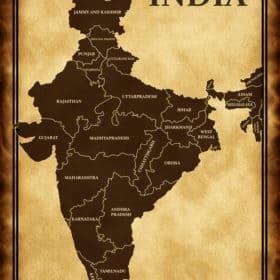
TRUTH – There is a HUGE difference in Indian food from state to state.
I touched on this briefly in myth 4…India is a huge country. It is 12 times larger than the UK (England, Wales, Scotland and Northern Ireland). If you think about the differences between the traditional food and drink produced in England, Scotland, Wales and Northern Ireland, it’s very clear to identity the differences.
They have their own gastronomic identity and style of cookery. Now, take the landmass of the UK and multiply that by 12…you would have an enormous amount of differences between each region. If you have been lucky enough to travel across India, whether that’s from North to South, West to East or all over, you will have noted the vast contrast in the food.
North Indian food is mainly plant based, as it is a landlocked area, with the perfect climate, soil and water supply for growing crops and tea. The food is heavily influenced by Persian and Afghani food (it’s historical neighbours) and the heat level is very low.
South Indian food features a lot of fish and seafood, as these are coastal areas. Coconut is used in savoury and sweet dishes, and is used in all forms…coconut water, coconut milk, cream of coconut, coconut oil and fresh coconut. The food is very hot and fiery. The South also grows a lot of coffee. In fact, if you are ever in the region of Kerela, it is known for the quality of it’s coffee.
Learn how to make authentic North Indian food:See our cookery school
“It is quite possibly the best dhal I have ever encountered..”
Annabel Venning, Journalist, The Telegraph, eating our family recipe Masoor di dhal (red lentil) made with Pure Punjabi Garam Masala

